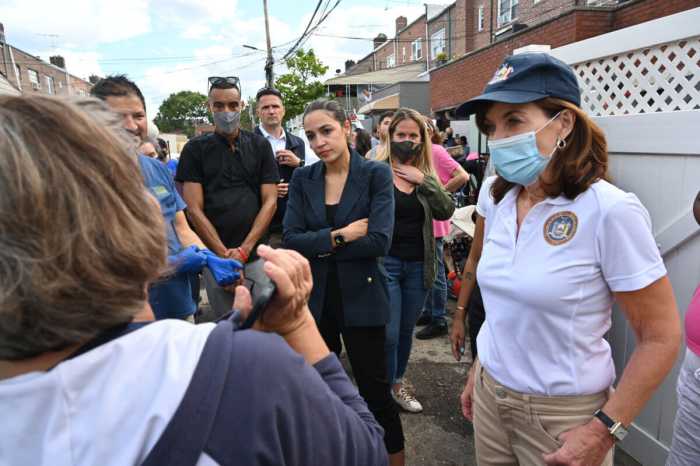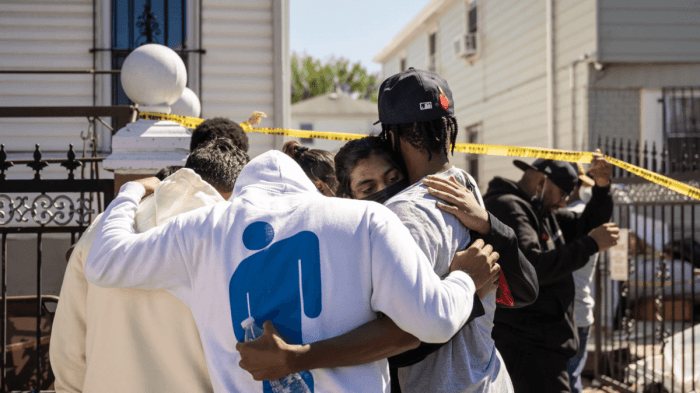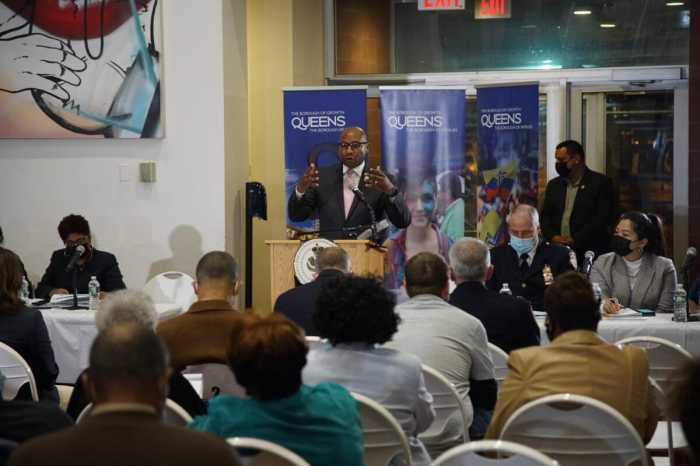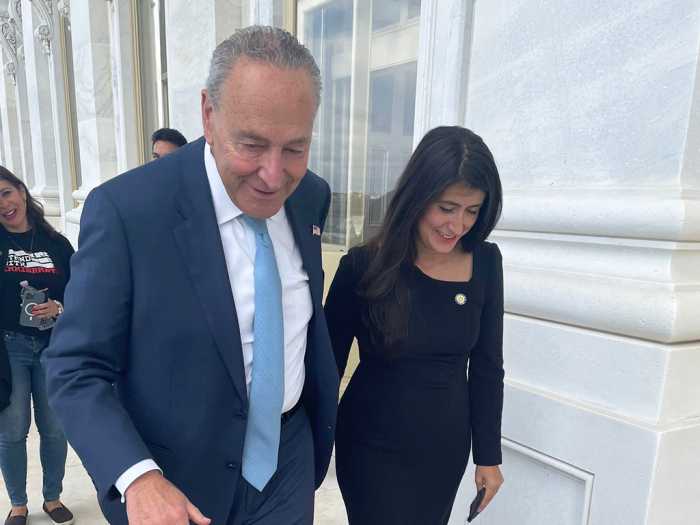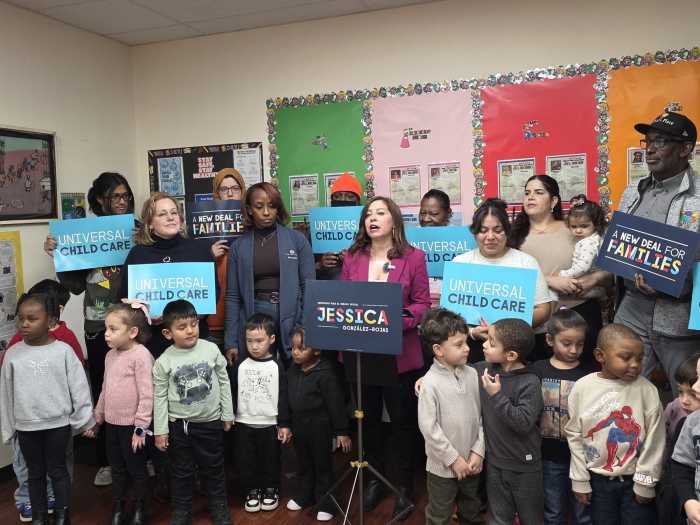On the one-year anniversary of Hurricane Ida, Mayor Eric Adams Thursday announced the completed construction of 2,300 new curbside rain gardens to help with flood mitigation in Queens and the Bronx.
The superstorm remnants of Ida hit the city on Sept. 1, 2021, leaving 13 dead and neighborhoods including South Ozone Park and East Elmhurst inundated with flood waters, heavily damaged basement apartments, and cars submerged on roadways like the Major Deegan Expressway in the northwest Bronx. The storm brought record-breaking amounts of rain with 3.15 inches of rainfall recorded in Central Park by the National Weather Service over a one-hour period during the storm – overwhelming the city’s sewers, which were built to only handle rainfall under two inches.
At a news conference honoring the one-year anniversary and announcing the new flood mitigation measures, Adams recalled seeing the Brooklyn Bridge flood for the first time during the storm, when he was still Brooklyn Borough President and the Democratic nominee for mayor.
“Today we acknowledge Hurricane Ida. It was the heaviest rainfall in our recorded history, flooding our streets and subways and basements in the city,” Adams said. “It had a major impact on us. I’ll never forget that day, being out, looking through the streets and watching the Brooklyn Bridge flood for the first time in my life I experienced that. The bridge had to be closed down because of the flooding. Our neighbors were victims of climate change. Thirteen New Yorkers died in their basement apartments due to flooding. This traumatized our city.”

The mayor was accompanied by his Chief Climate Officer and city Department of Environmental Protection (DEP) Commissioner Rohit Aggarwala, Mayor’s Office of Climate and Environmental Justice (MOCEJ) Executive Director Kizzy Charles-Guzman, City Council Speaker Andrienne Adams and Queens Borough President Donovan Richards.
While they look like ordinary planters, Adams said, the curbside rain gardens are designed to capture stormwater that runs off of hard surfaces before it can overwhelm the city’s sewer system.
“These rain gardens are more than just plantings, they are a strong defense against flash flooding,” Adams said. “Each rain garden has a capacity of holding up to 2500 gallons of water during a storm. Today we’re announcing the addition of 2300 new curbside rain gardens bringing us up to a total of 11,000 citywide. These are strategically located in areas where we know historically we’ve had flooding. And this is an attempt to mitigate the overburden of our sewer systems.”
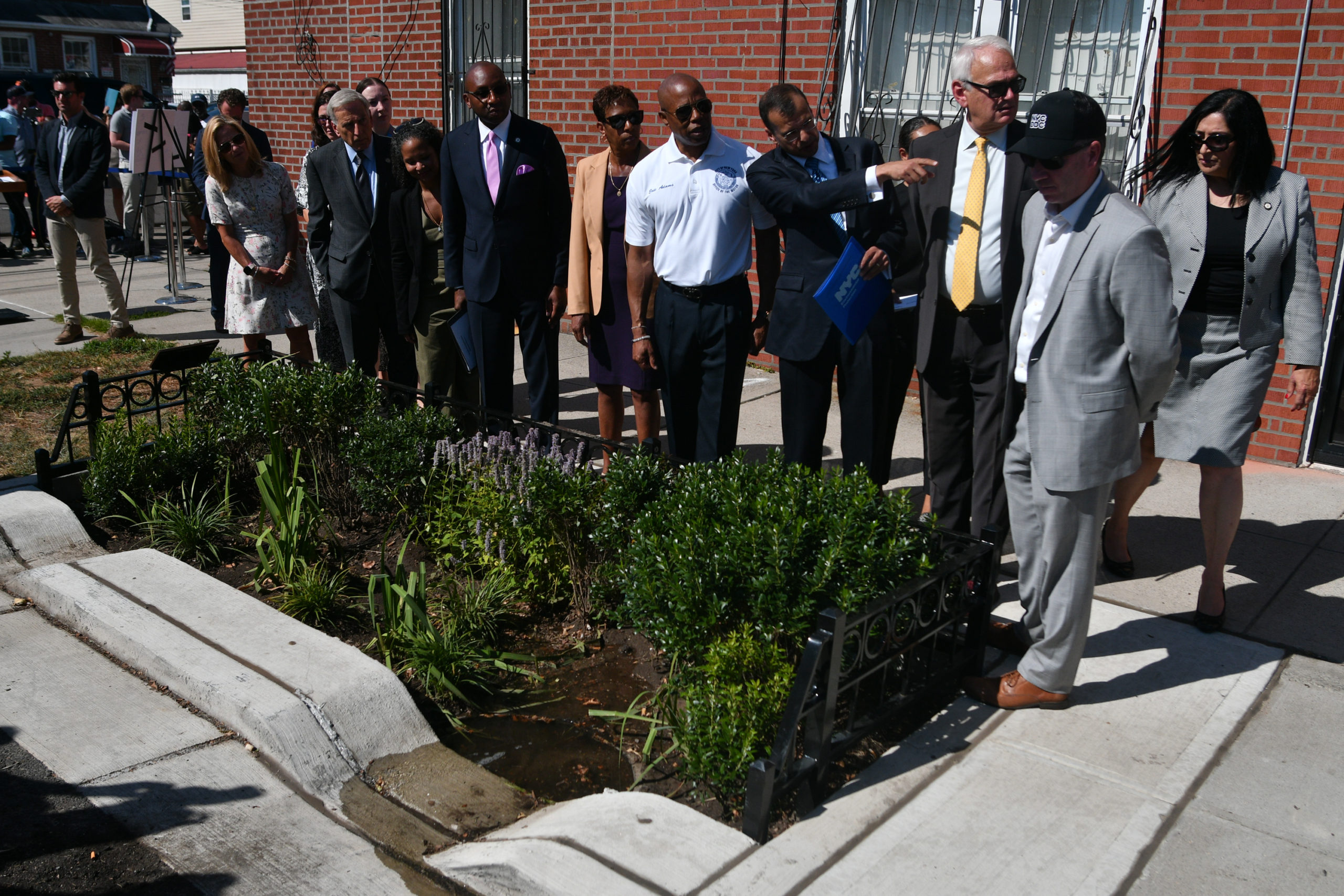
Over 1,800 of the new rain gardens were installed throughout Queens and another 565 were placed across the Bronx, with another 1,000 planned to be completed by the end of the year.
The mayor said the city is also employing other flood mitigation methods including cloudburst management, bluebelt drainage systems and flood sensors. The flood sensors provide real-time flood data collection to city agencies, residents, emergency responders and researchers, according to a release. The sensors can indicate the need for road closures, travel bans, the use of sandbags and provide data for future use.
Fifty flood sensors will be added this year – 29 of which have already been installed – with 500 slated to be installed in priority areas over the next five years, the mayor said.
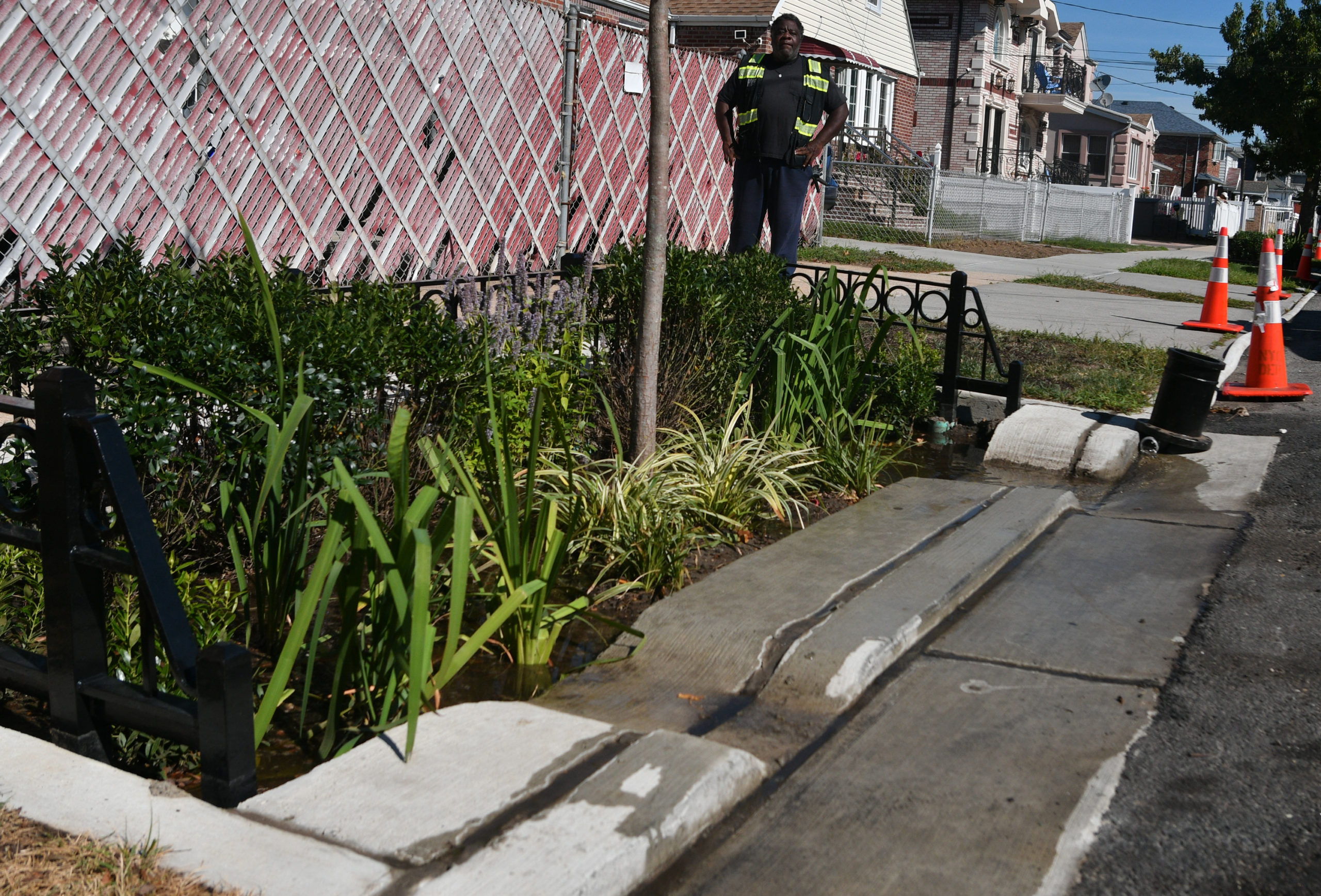
Also, Aggarwala said DEP is employing several strategies to help improve the city sewer system’s capacity for handling storm water. That includes implementing a new strategy for catch basin cleaning, employing technology to sinkholes and collapse, working with the MTA to figure out which subway stations are prone to flooding and expanding sewers in southeast Queens.
According to Aggarwala, better maintaining the sewer system and employing new green infrastructure like the rain gardens is the best way to prepare the city for future storms like Ida.
“Our path to resilience requires us to look to nature to augment our sewer system to build green infrastructure that will complement our gray concrete infrastructure,” Aggarwala said. “Separately, neither would do the job, but the combination of well maintained sewers and extensive green infrastructure can make New York City resilient in the face of the storms to come.”
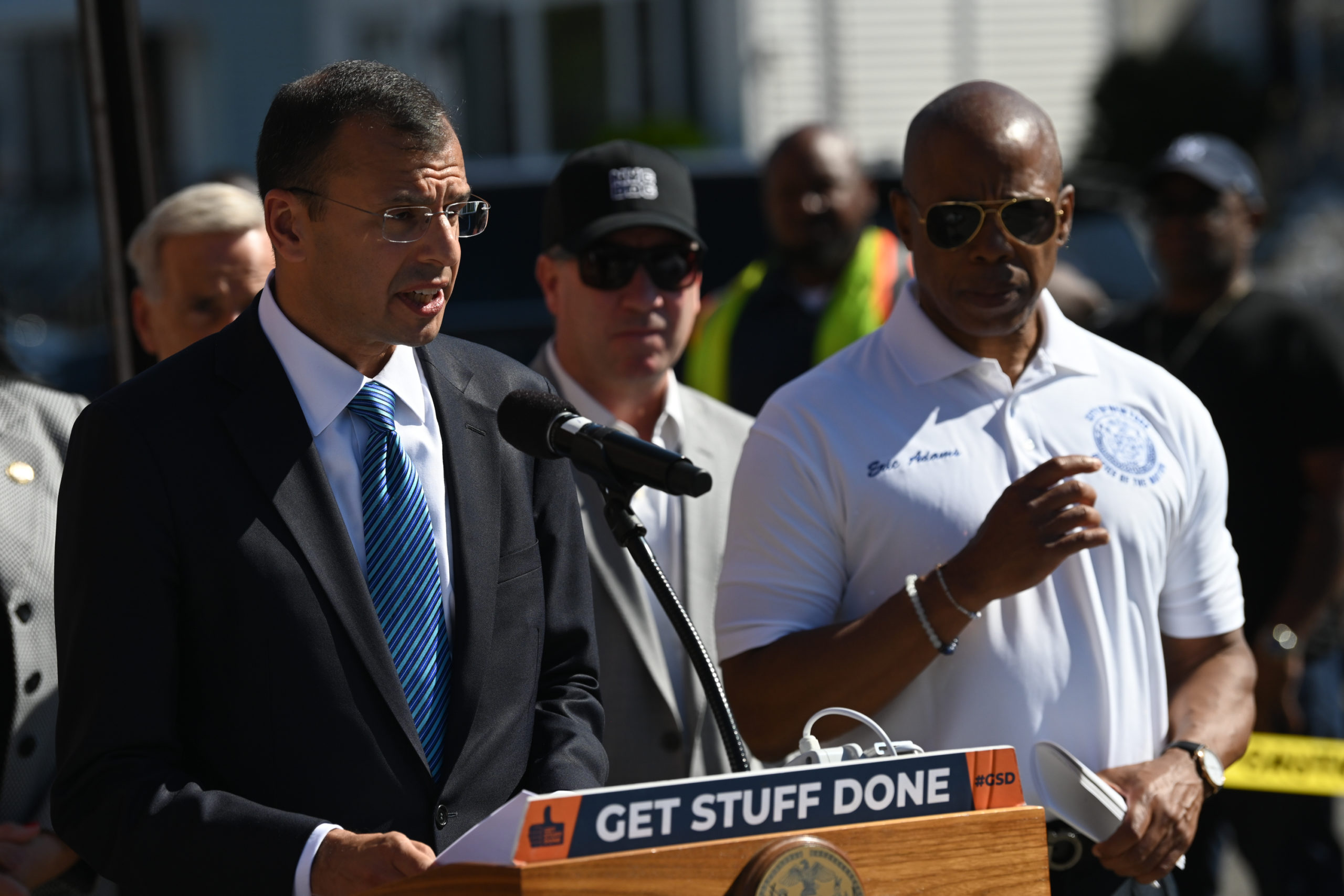
When it comes to protecting those living in illegal basement apartments, the mayor said the best path forward is to get the state legislature to legalize them, something city Comptroller Brad Lander has called for in recent days.
“We need the help from all of our electeds on how to go about getting that legislation passed,” Adams said. “That’s the heart of what we need to do with basement apartments is to get that bill passed. And we could use the help from the comptroller and whomever else wants to be part of that team.”



